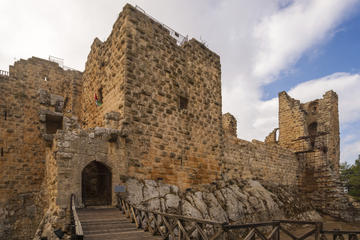Ajloun Castle
TIME : 2016/2/22 11:53:35

Ajloun Castle
Built atop the ruins of a monastery between 1184 and 1188, Ajloun Castle (Qala’At Ar-Rabad in Arabic) sits on Jabal Auf hill overlooking the countryside in the north of Jordan. Arab general Azz ad-Din Usama, Saladin’s nephew, oversaw its construction in part to protect the region from Crusader expansion and to safeguard iron mines in the nearby hills. The fort was enlarged in 1214 but largely destroyed by Mongols in 1260. It was rebuilt almost immediately, and while earthquakes have twice caused significant damage, ongoing restorations have kept the castle in much the same condition as it stood in the 13th century.
During the Crusades, the hilltop fort was one in a series of beacon and pigeon posts that allowed messages to be transmitted from Damascus to Cairo in a single day. During the seventeenth and eighteenth centuries, the fort served as a garrison for Ottoman troops, and in 1812, when it was “discovered” by Swiss explorer Johann Ludwig Burckhardt, the vast castle was occupied by a single, 40-member family.
Today Ajloun Castle houses a small museum with artifacts from its long history. Visitors can climb to the top of several towers for sweeping views of the Jordan Valley all the way to the Dead Sea.
Practical Info
The walk to the castle from town is steep and tiring, so consider taking a taxi from Ajloun.
